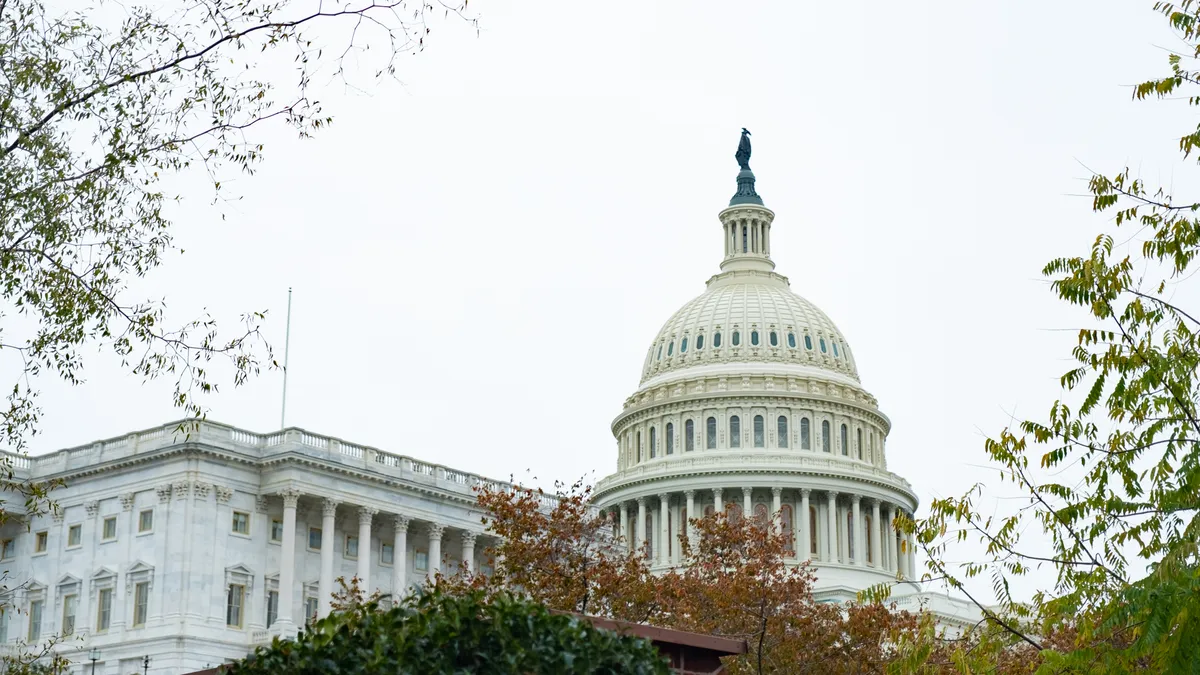It's not easy to debate a policy change with scant data. But that's been the challenge in arguments about whether Pell Grants should cover tuition for training programs as short as eight weeks.
With many programs potentially qualifying, it's hard for policymakers to know answers to simple questions: Do students who go through short-term programs have an easier time getting a job? Do they get paid more? Do the programs increase long-term career prospects?
Several teams of researchers have started to answer those questions in recent months, finding that the payoff for short-term programs varies widely. Plus, positive outcomes seem concentrated in fields dominated by White men, while fewer benefits are apparent in industries where more women and people of color tend to work.
The emerging research is incomplete and has done little to quell debates over short-term Pell grants, but it has informed discussions over what safeguards are needed if Congress ever approves the idea.
"A lot of it underscores what we already suspected: These programs have very wide payoffs. There's a lot of variability in this space," said Lindsay Ahlman, associate director of research and knowledge management at The Institute for College Access and Success. Given the variation, Ahlman said, policymakers should be cautious.
The federal government already allows students to use Pell Grants for certain short-term programs. The money must be used for for-credit classes that pass muster with accreditors and state regulators. Courses must last at least 15 weeks and offer 16 credits or 600 hours of instruction.
Many community colleges, workforce training experts and lawmakers want to let students use the need-based aid to pay for programs as short as eight weeks that result in an industry certificate instead of credit hours.
That would be a shift in the federal government's approach to funding workforce training. The U.S. Department of Labor funds many resources for training through the Workforce Innovation and Opportunity Act.
But the labor-based programs are "grossly inadequately funded," Ahlman said. The federal government has spent roughly five or six times as much money on Pell Grants in recent years as it has on workforce development activities under the WIO Act.
Pell Grants have their own funding constraints, she said, but, compared to traditional workforce training programs, they look "more robust."
"These programs have very wide payoffs. There's a lot of variability in this space."

Lindsay Ahlman
Associate director of research and knowledge management, TICAS
Pell Grants, in particular, are attractive because students who fall below certain income thresholds and file a Free Application for Federal Financial Aid receive them automatically. Making short-term job training programs eligible for Pell Grants would help students pay for the programs and spur community colleges and other institutions to add those types of offerings.
U.S. Sen. Tim Kaine, a Virginia Democrat, has been trying for years to get the changes approved. He's part of a bipartisan group of lawmakers pushing the JOBS Act to expand the Pell program.
They nearly succeeded in attaching their idea to a bill to improve U.S. competitiveness in June, but U.S. Sen. Rand Paul, a Kentucky Republican, blocked the package of amendments in which it was included. Kaine also readied an amendment to include the Pell expansion in the Senate infrastructure bill, but it never came to a vote.
Despite the setbacks, the idea seems to be picking up steam on Capitol Hill. The biggest question under debate is what kind of protections for students the legislation should include if it starts to move through Congress.
Advocates have proposed many potential guardrails for the program. Those include:
- Instructing the federal government to publish data about student outcomes.
- Requiring states to certify institutions that offer short-term courses, as they do for current Pell-eligible courses.
- Only allowing Pell Grants to fund programs that result in an industry-recognized credential.
- Making sure short-term programs are "stackable" and can be used to pursue longer-term programs.
- Ensuring Pell-eligible students in short programs can access academic advisors and other institutional supports.
What does the research say?
Recent studies could shape how lawmakers respond.
The study that Ahlman and her colleagues from TICAS conducted looked at programs in Iowa, Missouri and Texas. They found students could benefit from short-term training, but the results varied widely.
In Iowa, for example, 90% of students had a job a year after enrolling in noncredit, short-term programs, compared to just 70% before they began their new coursework. Employed students typically entered the programs making $27,000 a year, and they increased their earnings by an average of $4,350 a year later.
But the resulting salaries offered stark contrasts. Students in education-related fields reported income after their coursework of more than $76,000 a year. For health-related fields, which attracted far more students, the resulting salary was little more than $17,000.
Such disparities are not unique to short-term programs, the TICAS researchers noted. Still, the report's authors wrote that the variable labor outcomes highlighted the need for "quality assurance" if such programs became eligible for Pell Grants to avoid the "proliferation of low-quality programs."
They raised concerns about a lack of information to determine what factors make high-quality programs and indicate poor-performing offerings. That knowledge, the TICAS researchers wrote, is "needed to inform the development of quality guardrails appropriate for ensuring short-term programs achieve their specific goals."
The benefits of short-term programs skew heavily toward programs dominated by men, researchers for the Association of Community College Trustees concluded in a separate study. They looked at programs in Louisiana, North Carolina and Virginia community colleges.
Healthcare and education programs, for instance, predominantly enrolled women, while construction and other skilled trades drew men.
Even so, the researchers concluded that Pell Grants should be expanded to shorter training programs, with a few restrictions. They said the programs should lead to a recognized credential and allow students to build on their training with longer-term programs.
A third report from New America, a left-leaning think tank, also raised concerns about equity, particularly for women and students of color. It likewise stressed the need to learn more about which programs have labor-market value and for which students.
The case for consumer protections
The recent research illustrates the need to monitor new programs that would be eligible for Pell funding, said David Baime, senior vice president for government relations and policy analysis for the American Association of Community Colleges.
"Program outcomes do matter," he said. "We do not want to see students enrolled in programs that don't show strong benefits on the back end."
But community colleges already work with local businesses in their communities and analyze local economic data to develop programs that will help students get ahead, Baime said.
"Colleges don't want to create programs that aren't going to lead to successful outcomes," he said.
Amy Laitinen, New America's director for higher education, reached opposite conclusions.
While community colleges want what's best for their students, she said, they must acknowledge that the economic benefits of academic programs are highly correlated to how long they take to complete. Just like a four-year degree gives people more of a boost than a two-year degree, research shows that a yearlong program will help students more than an eight-week course, she said.
What's more, roughly 40% of students with a short-term certificate were unemployed as of 2016, Laitinen noted.
"It's just wishful thinking," she said. "It's just like everyone wants five-minute abs, but five-minute abs aren't a thing."
Laitinen is particularly concerned about what she called "unconscionable" racial and gender disparities in the results of the programs. New America researcher Monique O. Ositelu found that Black and Hispanic students who earn short-term certificates that take 15 weeks or less to complete typically earn $10,000 to $20,000 less a year than their White counterparts.
She suggested paying only for programs that produce good student outcomes.
"Let's not pay to create a huge cottage industry to support a bunch of programs that are going to put a bunch of Black and brown folks in poverty," Laitinen said.
Robert Shireman, a senior fellow and director of higher education excellence at The Century Foundation, is also wary of the push to abandon the existing workforce investment system by expanding Pell Grants to shorter programs.
If Pell Grants are expanded, Shireman warned that regulating short-term programs based on graduates' employment or earnings is the wrong approach.
"It's just like everyone wants five-minute abs, but five-minute abs aren't a thing."

Amy Laitinen
Director for higher education, New America
The data is inadequate, he said, and by the time it is collected and released to the public, it could be two years old. In the meantime, programs could expand to teach thousands of students before they learn whether the program is working as intended.
Shireman worried that for-profit operators will partner with community colleges to rapidly ramp up short-term programs to attract students and the federal money they bring. Those operators try to keep costs low but, in doing so, often offer lower-quality classes than a community college would normally provide, he said.
He recommended adding consumer protections.
For example, Pell Grants could be restricted to programs that meet one of two criteria. Either they must spend more than half of their budget on instruction and related services, or they need to prove people who aren’t receiving Pell grants are signing up for the courses, too. In the second case, the schools would have to show the number of Pell recipients in a short-term course are less than double the number of non-Pell students who enrolled in previous periods before the course's expansion.
"There needs to be some serious consumer protections there, because these are exactly the kind of programs that end up going awry," Shireman said. "They end up becoming moneymakers for whoever is running them, because they can make it seem as if this is the quick way to a good job."





















